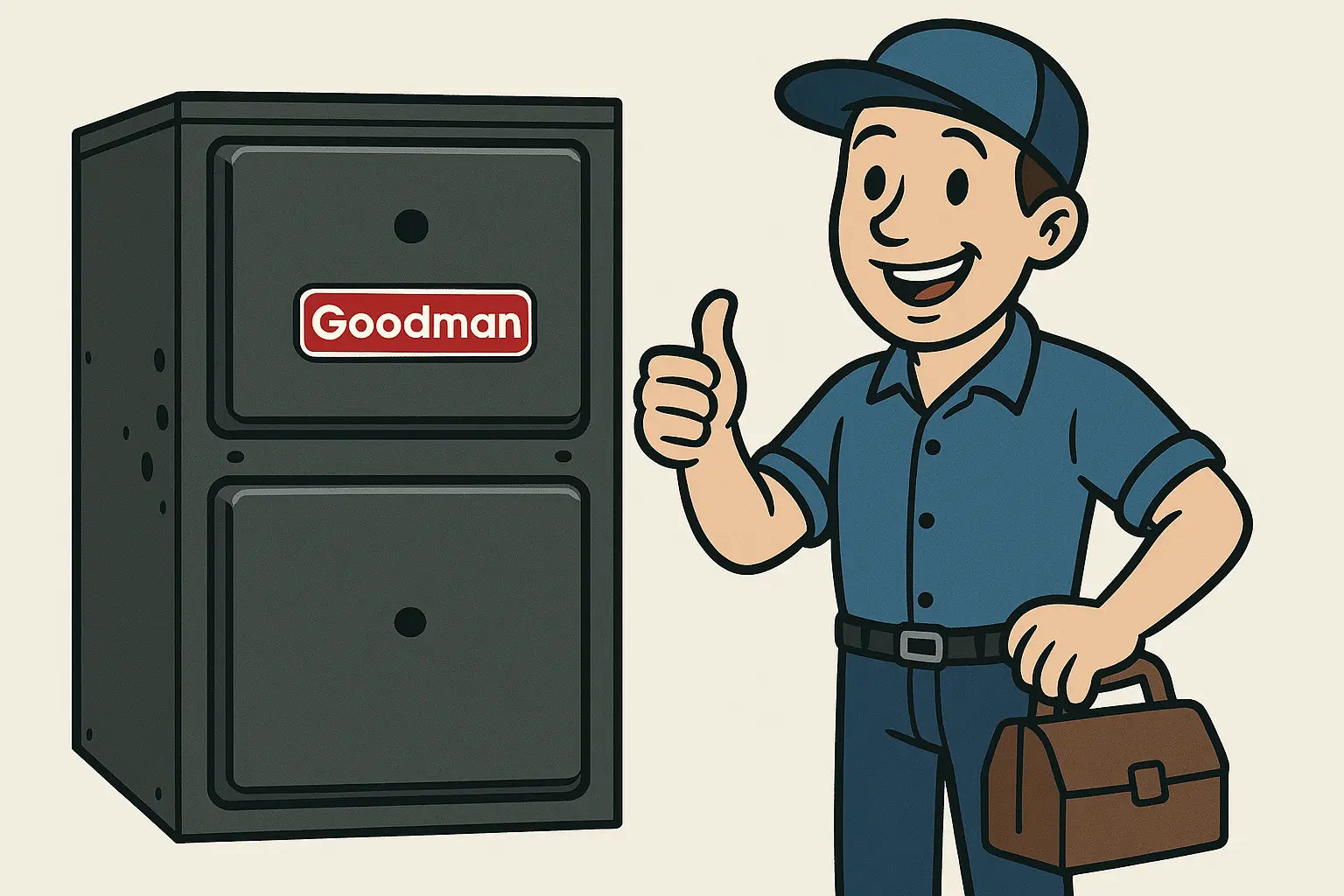Jake’s Take on Furnace Orientation
Hey, Jake here! 🛠️ Installing a furnace isn’t just about dropping it in a basement or utility closet. The orientation—upflow vs. horizontal—makes a big difference in airflow, efficiency, and comfort. The Goodman GR9S920603BN is versatile, supporting both configurations, but choosing the right one requires planning.
In this guide, I’ll break down upflow vs. horizontal installation, share the pros and cons of each, and give you tips for making the most of your furnace.
What is Upflow Installation?
-
In an upflow configuration, air enters the furnace at the bottom and exits through the top.
-
Most commonly used in basement installations where ductwork runs above the furnace.
-
Works well when the return air is below the unit and supply ducts are above.
Pros:
-
Gravity-assisted airflow can improve efficiency.
-
Easier to service components from the front.
-
Standard for many homes with basements.
Cons:
-
Requires vertical space for installation.
-
Not ideal if ductwork cannot be routed upward.
For more on upflow furnace installation tips, check this furnace installation guide.
What is Horizontal Installation?
-
Horizontal furnaces blow air sideways, typically installed in attic spaces, crawl spaces, or tight closets.
-
The air moves parallel to the floor, entering from one side and exiting the other.
Pros:
-
Great for homes with limited vertical space.
-
Allows flexibility in attic or crawlspace installations.
-
Can fit into narrow areas where upflow isn’t possible.
Cons:
-
Requires more careful duct alignment to avoid airflow restrictions.
-
Slightly more challenging to service than upflow units.
Learn more about horizontal furnace installation from this HVAC troubleshooting guide.
Key Considerations for Both Installations
-
Clearances: Check Goodman’s specifications for front, top, and side clearance to allow airflow and service access.
-
Airflow: Ensure supply and return ducts are properly aligned with the furnace orientation.
-
Efficiency: Proper orientation helps the GR9S920603BN operate at 92% AFUE efficiency, reducing energy waste.
-
Maintenance: Upflow units are typically easier to maintain due to accessibility, while horizontal units require attention to reach vents and panels.
Choosing the Right Orientation
-
Basement or utility room: Upflow is usually preferred.
-
Attic or crawlspace: Horizontal may be the only practical option.
-
Airflow design: Evaluate return and supply duct placement to avoid bottlenecks.
-
Ease of maintenance: Consider how easy it will be to access filters, blower, and gas components.
For guidance on deciding the best installation orientation, check out this Energy.gov furnace guide.
Installation Tips from Jake
-
Always level your furnace—even small tilts affect blower performance.
-
Use UL-approved duct tape or mastic to seal duct joints and prevent leaks.
-
Double-check venting and gas connections before powering up.
-
Keep a clear workspace around the furnace for maintenance access.
For model-specific installation recommendations, see the Goodman GR9S920603BN product page.
Pros and Cons Summary
| Orientation | Pros | Cons |
|---|---|---|
| Upflow | Gravity-assisted airflow, easier servicing, standard for basements | Requires vertical space, not ideal for tight attic or crawl spaces |
| Horizontal | Fits tight spaces, flexible placement, good for attics/crawlspaces | Requires careful duct alignment, harder access for maintenance |
Outro: Wrapping It Up
Choosing the right orientation for your Goodman GR9S920603BN furnace is critical for efficiency, comfort, and long-term reliability. 🔧💨 Upflow is perfect for basements, while horizontal works well in attics or crawl spaces—but always consider airflow, clearance, and serviceability.
For full specs and installation guidance, check out the Goodman GR9S920603BN product page.
Think you might need to call a professional? Visit my guide: Safe Fixes vs. Dangerous Repairs.
Stay safe, plan carefully, and keep that furnace running like a champ.
- Jake out! 🛠️🔥







